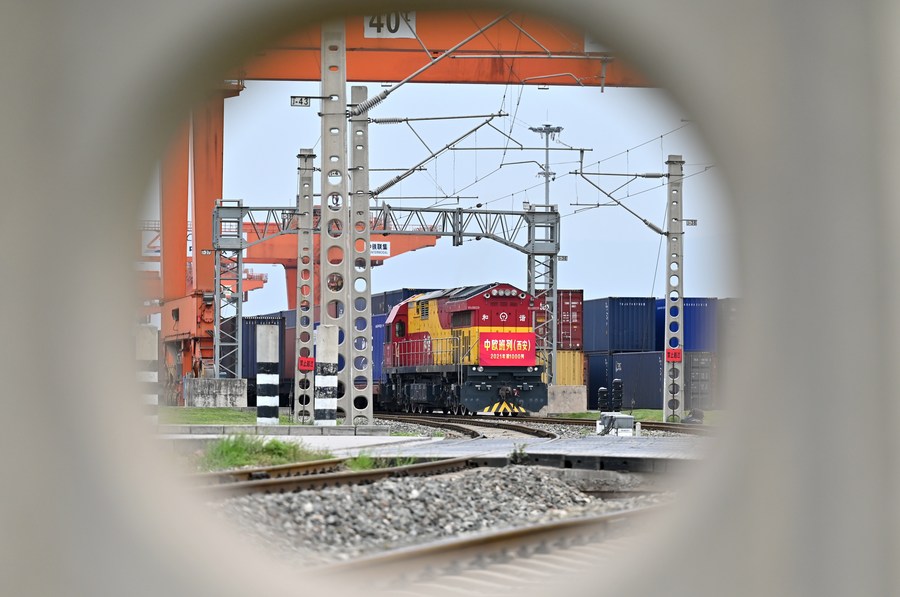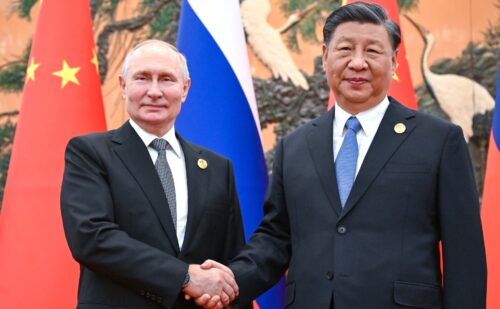Russia looms over the China Central-Asia Summit
Despite its greater presence in Central Asia, China will not displace Russia anytime soon.

At the beginning of the month, China announced a summit set to take place on May 18-19.
The event will bring together Chinese President Xí Jìnpíng 习近平 and his counterparts from five Central Asian countries: Kazakhstan’s Kassym-Jomart Tokayev, Kyrgyzstan’s Sadyr Japarov, Tajikistan’s Emomali Rahmon, Turkmenistan’s Serdar Berdimuhamedov, and Uzbekistan’s Shavkat Mirziyoyev.
In a highly symbolic gesture, the leaders will meet in Xi’an, a city frequently referred to as the starting point of the Silk Road.
The leaders will meet at a critical time. Following Russia’s invasion of Ukraine, doubts have surfaced as to whether the Kremlin still has the capacity to act as Central Asia’s security guarantor. The status quo in recent years is that, while Russia upholds the region’s military and political stability, China contributes to its economic development. However, with Russia’s own military capacity under scrutiny, some are speculating about a major regional shift towards greater dependence on China.
Central Asian leaders have voiced apprehension over Russia’s belligerent behaviour. Kazakhstan’s President Tokayev, for example, openly refused to recognise the Russian-backed republics of Donetsk and Luhansk at the Saint Petersburg International Economic Forum. Russia itself had recognised these breakaway regions as independent in February 2022, but annexed them the following September. Kazakhstan would be particularly threatened if Russia succeeds in Ukraine: Nationalists in Russia have long yearned for the annexation of Northern Kazakhstan, which has a substantial Russian population. In light of this fact, former Kazakh President Nursultan Nazarbayev reportedly sought Chinese assurances for Kazakhstan’s security.
Russia still holds significant sway over Central Asia
Nevertheless, it is unlikely that China will displace Russian influence any time soon. Despite their evident unease at Russia’s invasion of Ukraine, all five Central Asian leaders attended Moscow’s Victory Parade on May 9, during which Putin reaffirmed Russia’s willingness to continue fighting. As Carnegie’s Temur Umarov convincingly argues, most of them had no plans to participate until they received phone calls from Putin, illustrating Russia’s continued powers of intimidation. Umarov also points out that Central Asian exports to Russia have soared amidst European sanctions, and that the region has become a “financial hub for Russians moving their savings out of Russia.”
Central Asia is also known for its active efforts to balance the influences of different powers, and local leaders are wary of China or any other country in a dominant position. Despite Russia’s historic hold on Central Asia, for example, the region welcomed a strong U.S. presence in the early 2000s as part of Operation Enduring Freedom. Chinese state media also admitted that the Central Asian countries have established a 5+1 format with several other actors, such as the U.S., Japan, and the EU.
China’s growing presence
Although Chinese media have been playing up the momentousness of the summit, close Chinese ties to Central Asia are nothing new. China launched its first 5+1 format event in 2020 and it held a virtual summit with the Central Asian countries in 2022. Both China and Russia also frequently interact with the Central Asian countries within the Shanghai Cooperation Organisation, of which only Turkmenistan is not a member. Central Asia also holds an important place in the development of China’s modern foreign policy: Xi Jinping first unveiled what would become the Belt and Road Initiative (BRI) at a speech in Kazakhstan in 2013.
This is not to say that China’s growing influence in Central Asia is insignificant. Trade between China and the region has grown more than a hundredfold since the establishment of formal relations, according to Chinese state media. Turkmenistan is among China’s top gas suppliers, with Kazakhstan and Uzbekistan making significant profits in this area as well. Beijing has also recently revived its China-Kyrgyzstan-Uzbekistan Railway project, which promises to bypass Russia amid Western sanctions and establish a new overland connection between China and Europe.
China and Russia share similar interests and prompt similar fears in Central Asia
Nevertheless, Chinese assurances of non-competition with Russia are not mere diplomatic talk: Their priorities in Central Asia are largely the same. In their last joint declaration, the two countries underscored their joint opposition to so-called color revolutions “in their common adjacent regions” and said they would “counter interference by outside forces in the internal affairs of sovereign countries.” Thus, local strongmen can continue to rely on great power support to uphold regional stability — like when Kazakhstan’s President Tokayev invited Russian troops to quell popular protests in January 2022. Both China and Russia have an inherent interest in this arrangement, fearing that instability may breed terrorism, which could spillover to minorities within their own borders.
There is also one other way in which the two powers are more similar than different. Nationalist voices within China are no less revisionist than those in Russia, raising concern in Central Asian countries. In Kyrgyzstan, one Chinese construction project was met with protests from citizens, who cited China’s deal with neighbouring Tajikistan as a cause for concern. In 2011, Dushanbe ceded 1,000 square kilometers (386 square miles) in the Pamir Mountains to China in return for debt forgiveness. More recently, Tajik authorities denounced an article published in several Chinese outlets by a historian arguing for China’s historical claim to the Pamir Mountains.






